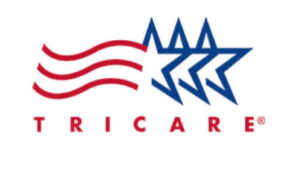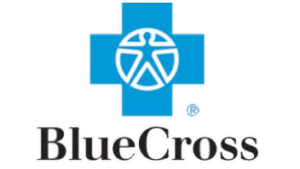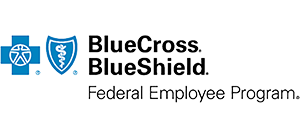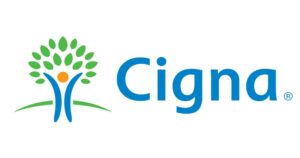articles
Sero Mental Health is dedicated to continuing education. We invite you to read some exciting new research curated by Chief Science Officer, Mark S. Gold, MD, featuring the latest information, data, and studies in behavioral health and wellness.

Which Drug Epidemic Is Next: Meth, Psychedelics, Mushrooms?
KEY POINTS:
- Current data and historical trends indicate that while the opioid epidemic may be reaching a plateau, stimulant misuse—particularly involving methamphetamine and cocaine—is emerging as the next critical concern.
- CDC reports show a 17% reduction in overdose fatalities between July 2023 and July 2024, underscoring the effectiveness of targeted interventions and harm-reduction strategies.
- However, this progress is tempered by a parallel rise in deaths linked to polysubstance use, including speedballing and concurrent stimulant intake.
- Simultaneously, the increasing use of psychedelics such as psilocybin, MDMA, and LSD reflects evolving patterns in recreational and therapeutic drug consumption that merits closer clinical and research scrutiny.
Teens and Counterfeit Death Pills
KEY POINTS:
- Rising Adolescent Overdose Mortality: Drug overdose has emerged as the third leading cause of death among individuals under the age of 19 in the United States. This alarming statistic reflects a significant public health emergency requiring increased vigilance, early identification, and prompt intervention by pediatric and behavioral health providers.
- Lethality of Counterfeit Medications: Adolescents are particularly vulnerable to the dangers posed by counterfeit pills, which are often illicitly manufactured to mimic prescription medications such as alprazolam (Xanax), amphetamine-dextroamphetamine (Adderall), or oxycodone (OxyContin). These pills frequently contain high-potency synthetic opioids, including illicitly manufactured fentanyl, placing users at heightened risk for unintentional overdose and death—even with a single exposure.
- Gaps in Screening and Treatment Access: One of the most significant barriers to managing opioid use disorder (OUD) in adolescents is the widespread absence of standardized screening, diagnostic evaluation, and treatment referral within pediatric and school-based health settings. Addressing this gap is critical to ensuring timely identification and evidence-based care.
- Public Health Messaging and Clinical Awareness: The “One Pill Can Kill” campaign underscores the lethality of counterfeit medications and is designed to raise public and clinical awareness of the overdose risks posed by even a single encounter with a contaminated pill. Clinicians are urged to incorporate this messaging into prevention strategies, family education, and treatment planning.
Cannabis Use Disorders in Teens and Adults
KEY POINTS:
- Cannabis use disorder (CUD) is a clinically recognized condition with significant behavioral and functional consequences; adolescents represent a particularly vulnerable population.
- Rates of CUD are rising both in the United States and internationally, a trend attributed in part to the proliferation of ultra-high-potency cannabis products.
- Contemporary methods of cannabis consumption—such as dabbing—expose users to substantially elevated levels of tetrahydrocannabinol (THC), increasing the risk of dependence, cognitive impairment, and adverse psychiatric outcomes.
The Many Risks of Cannabis and High-Dose THC
KEY POINTS:
- The escalating potency of Δ9-tetrahydrocannabinol (THC) in contemporary cannabis products is associated with heightened concerns regarding short- and long-term health outcomes.
- Experts in addiction medicine and neuroscience continue to highlight the potential impact of high-THC cannabis on neurodevelopment, particularly during adolescence—a critical window for cognitive and emotional maturation.
- Advances in endocannabinoid system research offer promising avenues for the development of novel therapeutic interventions targeting cannabis use disorder, as well as related conditions such as sleep dysregulation and chronic pain.
Ketamine Use Disorder Is on the Rise
KEY POINTS:
- Emergence of Ketamine Use Disorder (KUD): Ketamine use disorder is increasingly recognized as a distinct and emerging addictive condition. While historically underappreciated in clinical settings, rising patterns of compulsive use, tolerance, and withdrawal symptoms have prompted greater attention to its diagnostic and therapeutic implications.
- Dual Identity as Therapeutic Agent and Substance of Misuse: Ketamine is classified by the World Health Organization as an essential medicine due to its anesthetic and analgesic properties. However, its growing nonmedical use—particularly in recreational and self-medication contexts—has been associated with significant health risks, including urological, cognitive, and psychiatric complications.
- Development of Diagnostic Tools for KUD: In response to increasing clinical encounters with ketamine misuse, researchers have proposed diagnostic criteria and screening questions to aid in the identification of ketamine use disorder. These tools are designed to align with DSM-5 substance use disorder frameworks and can assist both clinicians and patients in recognizing problematic patterns of use.
The Best Way to Treat Alcohol Use Disorder (AUD)
KEY POINTS:
- Although alcohol use disorder (AUD) is highly prevalent, fewer than 2% of individuals with AUD receive pharmacologic treatment approved by the U.S. Food and Drug Administration, highlighting a substantial gap in care.
- Clinical evidence supports the safety and efficacy of disulfiram when administered under supervision, with improved adherence linked to better abstinence outcomes.
- Naltrexone, available in both oral and extended-release injectable formulations, functions by attenuating the reinforcing effects of alcohol and opioids through μ-opioid receptor antagonism, thereby reducing relapse risk.
- Integrated approaches that combine pharmacotherapy with behavioral interventions and peer support (e.g., Alcoholics Anonymous) have demonstrated superior efficacy compared to single-modality treatments.
Calls to Reassess Cannabis Risks: New Research Reported
KEY POINTS:
- Cannabis has long been perceived by the public as a relatively benign substance; however, evolving evidence has challenged this assumption.
- Recent peer-reviewed literature has drawn attention to a range of adverse outcomes associated with cannabis use, particularly in relation to high-potency products and early initiation.
- Increasingly, clinicians and researchers are observing associations between cannabis use and elevated risks of depressive symptoms, emergency department presentations, suicidality, and the development of cannabis use disorder (CUD).
Zyn Nicotine Pouch Products Get FDA Approval for Adults
KEY POINTS:
- Zyn nicotine pouches are positioned in the marketplace as a “cleaner” alternative to combustible tobacco and vaping products, containing nicotine without tobacco leaf or combustion byproducts.
- Although perceived by some as lower risk, Zyn remains a highly addictive product; its slower buccal absorption compared to inhaled nicotine may reduce peak plasma levels, but dependence potential persists.
- Certain high-strength formulations of Zyn deliver up to 6 mg of nicotine per pouch—an amount that can approximate the nicotine yield of multiple combustible cigarettes, raising concerns about sustained neurochemical impact and potential gateway effects, particularly among adolescents and nicotine-naïve individuals.
The Good News About Overdose Deaths in the U.S.
KEY POINTS:
- As of February 2025, the Centers for Disease Control and Prevention (CDC) reported a nearly 24% reduction in drug overdose mortality in the United States—a notable shift in the trajectory of the opioid crisis and broader substance use landscape.
- Specifically, overdose fatalities declined from approximately 112,000 between October 2022 and September 2023 to 87,000 during the corresponding period in 2023–2024, suggesting meaningful progress in harm-reduction efforts.
- This decline is attributed in part to increased access to naloxone, the expansion of telehealth services, and broader implementation of evidence-based treatments such as medication-assisted treatment (MAT), which together have enhanced reach News Flash: Increased Numbers of Children Poisoned by Fentanyland continuity of care for individuals with substance use disorders.
News Flash: Increased Numbers of Children Poisoned by Fentanyl
KEY POINTS:
- Recent analyses indicate a marked increase in the severity of pediatric fentanyl poisonings between 2015 and 2023, reflecting a growing threat to child health and safety.
- More than one-third of these cases were either unintentional or involved documented life-threatening outcomes, underscoring the vulnerability of children to opioid exposure.
- Amid the proliferation of counterfeit pills adulterated with fentanyl, comprehensive harm reduction and prevention strategies must explicitly address pediatric populations to mitigate further morbidity and mortality.
What We Can Learn from Celebrity Addictions
KEY POINTS:
- Public figures and celebrities are often regarded as cultural influencers and aspirational role models, particularly among youth and media consumers.
- Robert Downey Jr. battled heroin and cocaine addiction for years, leading to multiple arrests and nearly a year in prison in 1999. After turning his life around in the early 2000s, he rose to fame as Iron Man and became one of Hollywood’s top earners.
- Jamie Lee Curtis struggled with a decade-long addiction to prescription painkillers and alcohol, even stealing pills from loved ones. She achieved sobriety in 1999 and later won an Oscar in 2023 for Everything Everywhere All at Once.
- Bradley Cooper overcame alcoholism after a self-destructive period in his 20s. He’s been sober since 2004 and credits it with saving his career, now starring in major films like A Star is Born and Maestro.
- Public figures can shape societal views on drugs and sobriety. While some inadvertently glamorize substance use (e.g., speedballing, cannabis), others inspire recovery. High-profile deaths and habits—like Amy Winehouse’s alcohol overdose and pop culture’s embrace of marijuana—have raised awareness, for better or worse.
- High-profile struggles with addiction and substance-related mortality have contributed to broader societal awareness of the dangers associated with drug misuse and the complexity of substance use disorders (SUDs).
- Conversely, stories of celebrities achieving sustained recovery underscore the potential efficacy of comprehensive treatment approaches—including rehabilitation programs—and serve to destigmatize help-seeking behaviors.
The New Amphetamine Crisis
KEY POINTS:
- Amphetamines were widely prescribed in the mid-20th century for indications such as weight loss, fatigue, and depressive symptoms, prior to the emergence of clinical and regulatory concerns regarding their misuse and addictive potential.
- By 2023, data indicated that 6.6% of U.S. adults were using prescription amphetamines indicated for attention-deficit/hyperactivity disorder (ADHD); while many were appropriately diagnosed, a subset engaged in nonmedical use, highlighting ongoing challenges in monitoring and risk mitigation.
- Contemporary patterns of misuse have been observed among high-performing professionals—particularly in sectors such as technology and finance—who may use ADHD medications off-label in pursuit of enhanced cognitive or occupational performance, raising ethical and clinical concerns about stimulant diversion and neuroenhancement.
Spring Break 2025: College Binge Drinking in Context
KEY POINTS:
- Large-scale longitudinal studies indicate a downward trend in alcohol misuse among high school and college-aged individuals, reflecting the potential impact of public health initiatives and shifting social norms.
- Despite this encouraging data, contemporary media portrayals—particularly around events such as spring break 2025—continue to emphasize high levels of alcohol consumption among young adults, potentially reinforcing risky behavioral stereotypes.
- While overall rates of hazardous drinking have declined in collegiate settings, episodic heavy drinking and associated harms persist, warranting continued clinical vigilance and culturally responsive prevention strategies.
Are You a Chocoholic? The Good News…
KEY POINTS:
- Cocoa, a key component of dark chocolate, has been associated with anti-inflammatory properties and potential benefits for cognitive function, mood regulation, and behavior, as evidenced in emerging nutritional neuroscience research.
- Bioactive compounds found in chocolate—such as theobromine and phenylethylamine—interact with neurochemical pathways involved in reward processing, particularly through dopaminergic activation.
- These neurobiological effects may contribute to the development of craving, hedonic eating, and reduced dietary self-regulation, potentially triggering compulsive consumption patterns in vulnerable individuals.
- Episodic memory traces related to highly palatable, energy-dense foods are encoded within the hippocampus, reinforcing reward-driven eating behaviors and intensifying perceived cravings, especially under stress or emotional duress.
Getting High the Cali Sober Way
KEY POINTS:
- “California Sober” beverages represent a growing category of alcohol-free products designed to produce calming or euphoric effects, appealing to individuals who abstain from alcohol but seek similar experiential outcomes.
- In jurisdictions where legally permitted, some of these alternative beverages are infused with tetrahydrocannabinol (THC) or cannabidiol (CBD), introducing psychoactive or therapeutic properties that may influence mood, cognition, and behavior.
- Several formulations also include adaptogens—botanical compounds purported to modulate stress responses—although empirical evidence supporting their efficacy remains limited and warrants further investigation.
Naltrexone Is the Ozempic for Alcoholism
KEY POINTS:
- Naltrexone, an FDA-approved μ-opioid receptor antagonist, is undergoing renewed clinical attention for its potential in treating substance use disorders, paralleling recent enthusiasm surrounding medications such as semaglutide (Ozempic).
- Although prior studies have demonstrated the efficacy of naltrexone in reducing cravings and relapse in alcohol and opioid use disorders, adherence and uptake in clinical populations have historically been suboptimal.
- Emerging evidence suggests that glucagon-like peptide-1 (GLP-1) receptor agonists, such as semaglutide, may attenuate alcohol consumption—prompting calls for direct comparative studies with agents like naltrexone to better inform pharmacotherapeutic strategies.
Clubbing in Virtual Reality
KEY POINTS:
- “VR clubbing” refers to the practice of attending immersive, virtual dance environments via head-mounted display technology; these events often span extended durations and simulate real-world nightlife experiences.
- Preliminary observational data and anecdotal reports suggest that some individuals engaging in virtual clubbing use psychoactive substances, including ketamine, lysergic acid diethylamide (LSD), and 3,4-methylenedioxymethamphetamine (MDMA)—to enhance sensory immersion and emotional euphoria.
- The phenomenon of extended virtual engagement, sometimes described as “digital benders” or VR binges, can persist for several consecutive days, raising concerns about dissociative symptoms, circadian disruption, and potential behavioral dysregulation among high-frequency users.
Women With Alcohol Use Disorder Have a Different Disease
KEY POINTS:
- Due to lower gastric and hepatic alcohol dehydrogenase activity, women metabolize ethanol less efficiently than men, resulting in higher peak blood alcohol concentrations and increased physiological toxicity at comparable intake levels.
- Neurobiological studies reveal that women exhibit unique neuroimmune signaling and heightened stress-related neural circuitry in the context of alcohol exposure—factors that may contribute to sex-specific vulnerability to alcohol use disorder (AUD).
- Despite these biological distinctions, the majority of pharmacologic trials for AUD have historically enrolled predominantly male participants, highlighting the urgent need for sex-specific research to guide the development of tailored therapeutics and precision treatment strategies.
Abused Drugs and Trends We’re Up Against in the U.S.
KEY POINTS:
- Over the past decade, the United States has witnessed a sustained rise in overdose mortality driven by the combined use of opioids and stimulants, reflecting an increasingly complex and lethal substance use landscape.
- Distinct geographic patterns have emerged, with fentanyl-cocaine co-involvement predominating in the Eastern U.S., while fentanyl-methamphetamine combinations are more prevalent in Western regions—posing regionally specific clinical challenges.
- The dynamic and unpredictable nature of drug adulteration—often involving potent agents such as fentanyl analogs, local anesthetics, xylazine, and veterinary sedatives like medetomidine—continues to exacerbate overdose risk, complicate treatment response, and hinder toxicologic surveillance.
Where Is the Anti-Fentanyl Truth Campaign?
KEY POINTS:
- The Truth Initiative is widely recognized for its evidence-based success in reducing youth tobacco use through strategic public messaging and the deliberate de-normalization of tobacco industry practices.
- Public health experts have advocated for the application of similar stigmatization strategies targeting high-risk behaviors such as fentanyl use and “speedballing” (co-administration of opioids and stimulants via smoking or injection), aiming to counteract normalization and reduce initiation.
- Concerningly, there is growing evidence that a subset of users—particularly those with repeated exposure—have become desensitized to the risks associated with fentanyl, cocaine, methamphetamine, and injection practices, indicating an urgent need for innovative harm reduction messaging and behavioral interventions.
Reducing Personal Shame and Stigma Heps with Recovery
KEY POINTS:
- Reducing stigma and addressing internalized shame are essential components in enhancing an individual’s willingness to initiate and engage in treatment for substance use disorders.
- The recovery process is inherently non-linear, requiring a flexible, patient-centered approach characterized by sustained support, clinical perseverance, and adaptability over time.
- Sustained recovery extends beyond the cessation of substance use—it involves emotional maturation, identity development, and the cultivation of a purpose-driven, values-oriented life.
- Lapses and relapses are recognized as clinical features of substance use disorders and should be met with compassion, accountability, and an emphasis on re-engagement, rather than punitive responses.
Finally! Some Good News About U.S. Drug Overdose Deaths
KEY POINTS:
- Modest Decline in Opioid-Related Mortality: National data indicate a decrease in opioid overdose deaths from 84,181 in 2022 to 81,083 in 2023. While this represents a positive shift, the overall burden remains substantial and underscores the need for sustained intervention and surveillance efforts.
- Rising Mortality from Stimulant-Involved Overdoses: In contrast to the decline in opioid-related deaths, overdose fatalities involving methamphetamine and cocaine continued to rise in 2023. These increases reflect the growing complexity of polysubstance use and the limitations of opioid-centric treatment models.
- Disproportionate Global Burden: Although the United States comprises only 4% of the global population, it accounts for approximately 20% of all drug overdose deaths worldwide. This stark disparity highlights systemic vulnerabilities in prevention, treatment access, and harm reduction infrastructure.
- Illicitly Manufactured Fentanyls as a Primary Driver: An estimated 70% of U.S. overdose deaths in 2023 involved illegally manufactured fentanyls (IMFs), including fentanyl analogs such as carfentanil. These synthetic opioids continue to dominate the illicit drug supply and are frequently implicated in both fatal and nonfatal overdoses across all regions.
GLP-1s may interrupt the attachment and even desire to consume not only food but also drugs of abuse.
KEY POINTS:
- Neurocircuitry of Palatability and Food Reward: Gustatory stimuli, particularly those associated with highly processed, energy-dense foods, engage mesolimbic reward pathways in the brain. This activation parallels mechanisms observed in substance use disorders, suggesting overlapping neurobiological substrates underlying compulsive consumption behaviors.
- Pharmacologic Advancements in Obesity Management: Glucagon-like peptide-1 (GLP-1) receptor agonists—such as semaglutide (Ozempic) and tirzepatide (Mounjaro)—have demonstrated significant efficacy in treating obesity through appetite regulation, delayed gastric emptying, and modulation of central reward mechanisms.
- Potential Impact on Substance Use and Craving Pathways: Emerging evidence indicates that GLP-1 receptor agonists may attenuate not only hyperphagia and hedonic eating but also reduce cravings for substances of abuse. These findings support the hypothesis that GLP-1 pathways influence shared dopaminergic circuitry implicated in both food and drug reinforcement, potentially positioning these agents as therapeutic candidates in broader addiction frameworks.
“Neuromodulation in Addiction Treatment”
KEY POINTS:
- Emerging Role of Neuromodulation in Addiction Treatment: Neuromodulation represents a promising frontier in the management of substance use disorders (SUDs), offering non-pharmacologic strategies to modulate dysfunctional neural circuitry associated with compulsive substance use.
- Transcranial Magnetic Stimulation (TMS) as a Pioneering Modality: TMS was the first neuromodulatory technique to receive regulatory approval for use in addiction treatment. By delivering targeted magnetic pulses to specific cortical regions, TMS has demonstrated efficacy in reducing cravings and enhancing executive control among individuals with SUDs.
- Focused Ultrasound Neuromodulation and Craving Attenuation: Early clinical investigations suggest that low-intensity focused ultrasound may reduce craving intensity in individuals with opioid and other substance use disorders. This modality enables precise targeting of deep brain structures implicated in reward processing and craving regulation.
- Targeting Core Neurobehavioral Circuits: Neuromodulation interventions engage brain regions critical for decision-making, inhibitory control, and reward valuation—particularly the dorsolateral prefrontal cortex, anterior cingulate cortex, and striatal pathways. Modifying activity within these networks may restore functional balance and reduce relapse risk.
“Medical” Marijuana and Chronic Pain”
KEY POINTS:
- Perceived Analgesic Effects and Patient Beliefs: While some patients report symptom relief from cannabis use—particularly in the context of chronic pain—robust, high-quality evidence remains limited and inconclusive. Patient-reported outcomes often reflect perceived benefit, though placebo effects and individual variability must be considered in clinical assessment.
- Public Health Consequences of Expanded Access: The increased availability of both regulated and illicit cannabis products has coincided with a rise in adverse outcomes. These include higher rates of emergency department visits, psychiatric presentations, accidental ingestion in pediatric populations, and impaired driving. Concerns voiced by public health and addiction experts regarding commercialization, potency escalation, and youth access have begun to manifest in population-level data.
- Epidemiology of Cannabis Use Disorder (CUD): CUD is currently the most rapidly growing substance use disorder in the United States. Prevalence is rising particularly among adolescents and young adults, with increased daily or near-daily use, high-potency THC products, and early onset of use contributing to addiction vulnerability and psychiatric comorbidity.
- Clarifying Terminology in Clinical Contexts: The terms cannabis and marijuana are often used interchangeably, yet they carry important distinctions in medical and legal discourse. “Cannabis” refers broadly to the plant genus and all its constituent compounds, while “marijuana” is typically used to describe cannabis products that contain psychoactive concentrations of delta-9-tetrahydrocannabinol (THC), the compound primarily responsible for intoxication and addiction risk.
Extreme Drinking on Holidays and Special Occasions High-intensity drinking on Christmas, New Year’s, and other events.
KEY POINTS:
- Holiday-Associated Surge in Alcohol Consumption: Alcohol intake typically doubles among adults during celebratory events such as New Year’s Eve, substantially increasing the incidence of alcohol-related harm including impaired driving, domestic violence, and emergency room presentations.
- Prevalence and Consequences of High-Intensity Drinking: High-intensity alcohol use—defined as consumption well beyond standard binge thresholds—is relatively common during holidays and is linked to acute adverse outcomes, including blackouts, traumatic injuries, emergency department visits, and exacerbation of psychiatric symptoms.
- Lethality of Alcohol Poisoning: Rapid ingestion of large quantities of alcohol over a short time can result in alcohol poisoning, a potentially fatal condition characterized by respiratory depression, hypothermia, and loss of consciousness. Clinicians should remain vigilant during peak risk periods.
- January 1st as a Marker of Elevated Alcohol-Related Mortality: Epidemiologic data consistently identify January 1st as the calendar day with the highest incidence of alcohol-related deaths annually, underscoring the need for targeted preventive messaging, early intervention, and harm reduction strategies during this period.
“Top Findings on Addiction in 2024”
KEY POINTS.
- Shifting Patterns in Opioid-Related Mortality: While intravenous opioid overdoses have declined in some regions, mortality associated with alternative routes of administration—such as smoking—and high-risk behaviors like speedballing (opioid-stimulant co-use) continues to rise. These trends reflect the evolving nature of polysubstance use and underscore the need for adaptive harm reduction strategies.
- Clinical Significance of Non-Fatal Overdoses: Non-fatal opioid overdoses are not benign events. Hypoxic episodes resulting from respiratory depression can lead to lasting neurological injury, including cognitive impairment and motor dysfunction. These incidents should be treated as critical intervention points for initiating comprehensive care.
- Psilocybin and Neuroplasticity: Psilocybin, a serotonergic psychedelic compound, has been shown to induce widespread but reversible alterations in brain functional connectivity. These changes are associated with enhanced neuroplasticity and may have therapeutic implications for mood, anxiety, and substance use disorders, though further research is warranted to establish long-term safety and efficacy.
- Ibogaine as a Novel Therapeutic for Trauma and Brain Injury: Preliminary studies suggest that ibogaine, a psychoactive alkaloid derived from the Tabernanthe iboga plant, may offer neuropsychiatric benefits for individuals with post-traumatic stress disorder (PTSD) and traumatic brain injury (TBI). In a recent study of U.S. Special Operations veterans, ibogaine treatment was associated with significant reductions in PTSD symptoms, depression, and functional impairments. While promising, these findings require replication in controlled clinical trials to assess safety, especially given ibogaine’s known cardiotoxicity.
Teenage Abuse of Cough Medicines and Promethazine
KEY POINTS:
- Underrecognized Prevalence of Medication Misuse Among Adolescents: Nonmedical use of prescription and over-the-counter (OTC) medications by adolescents may be more widespread than current surveillance data suggest. Such behavior is often underreported, especially when involving easily accessible OTC products, and may not be identified through routine substance use screenings.
- Dextromethorphan (DXM) as a Misused Dissociative Agent: DXM, a common antitussive ingredient found in cough and cold preparations, is frequently misused by adolescents seeking dissociative or hallucinogenic experiences. At supratherapeutic doses, DXM acts on N-methyl-D-aspartate (NMDA) receptors, eliciting effects similar to those of ketamine or phencyclidine (PCP), and may pose significant psychiatric and neurologic risks.
- Rising Co-Misuse with Promethazine: Recent toxicological alerts and anecdotal reports highlight a growing trend among adolescents to combine DXM with promethazine, an antihistamine with sedative and anticholinergic properties. This combination may amplify central nervous system depression and increase the potential for adverse events including respiratory compromise, delirium, and impaired cognition.
California Sober or Abstinences
KEY POINTS:
- Defining the “California Sober” Paradigm: The term “California sober” (or “Cali sober”) generally refers to a lifestyle in which individuals abstain from certain substances—typically alcohol and opioids—while continuing to use other perceived “less harmful” substances such as cannabis or psychedelics. This approach reflects a broader movement toward personalized harm reduction rather than complete abstinence.
- Alternative Recovery Framework Post-Treatment or Overdose: For some individuals, particularly those with prior overdose experiences or dissatisfaction with abstinence-only models such as Alcoholics Anonymous (AA) or Narcotics Anonymous (NA), “California sober” is positioned as a more attainable or acceptable form of recovery. It is often framed as a pragmatic response to rigid sobriety definitions that may not align with individual values or experiences.
- Clinical and Ethical Considerations: Experts continue to examine the validity and limitations of “California sober” as a sustainable recovery strategy. Central to this discourse are concerns about cognitive distortion—specifically the distinction between hope for control and actual loss of control indicative of addiction relapse. Clinicians must evaluate whether such approaches support long-term recovery or risk perpetuating cycles of dependence under the guise of moderation.
Abused Drugs and Trends We’re Up Against in the U.S.
KEY POINTS:
- Decade-Long Escalation in Overdose Mortality: Over the past ten years, the United States has experienced a sustained increase in overdose deaths involving opioids and stimulants. This trend reflects the growing complexity of polysubstance use and the evolving potency of the illicit drug supply.
- Geographic Variability in Drug Combinations: Distinct regional patterns have emerged in the co-use of opioids and stimulants. In the Eastern U.S., the combination of cocaine and illicitly manufactured fentanyl is a predominant driver of overdose fatalities, whereas in the Western U.S., methamphetamine-fentanyl co-use is more prevalent. These patterns necessitate region-specific prevention and treatment strategies.
- Toxic Adulterants and Unpredictable Drug Composition: The illicit drug supply is increasingly contaminated with pharmacologically active adulterants, including local anesthetics (e.g., lidocaine), veterinary sedatives such as xylazine, and alpha-2 agonists like medetomidine. These substances complicate overdose presentations, reduce the efficacy of standard reversal agents like naloxone, and contribute to atypical toxidromes and treatment resistance.
Drugs of Abuse Cause Addiction Through Effects on the Brain
KEY POINTS:
- Dopaminergic Alterations Across Substances of Abuse: Decades of neuroscientific research confirm that all major classes of addictive substances induce measurable alterations in dopamine signaling pathways, particularly within mesolimbic and mesocortical circuits. These changes disrupt the brain’s reward, motivation, and reinforcement systems and are implicated in the transition from voluntary use to compulsive drug-seeking behavior.
- Mechanistic Insights into Addictive Processes: Scientific advances over the past 50 years have substantially expanded our understanding of how substances of abuse generate pleasure, modulate learning and memory circuits, and promote maladaptive reinforcement. This knowledge base has elucidated the neuroadaptive processes underlying tolerance, withdrawal, and relapse vulnerability.
- Addiction as a Chronic Brain Disease: Addiction is now widely recognized as a chronic, relapsing disorder with neurobiological underpinnings. This paradigm shift is supported by integrative research across disciplines—encompassing neuroanatomy, molecular and cellular biology, pharmacology, and functional neuroimaging—which together have established addiction as a disease state characterized by durable alterations in brain structure and function.
The 10 Most Common Myths About Addiction
KEY POINTS:
- Addiction Is a Treatable Medical Condition: Public and even professional misconceptions persist that addiction is untreatable or that individuals with strong moral character are somehow immune. Evidence-based interventions—including pharmacotherapy, psychotherapy, and integrated care—demonstrate that substance use disorders (SUDs) are chronic, relapsing conditions that can be effectively managed, particularly with early and sustained treatment.
- The Fallacy of “Hitting Rock Bottom”: The notion that individuals must reach a crisis point before initiating recovery is not supported by clinical evidence. Intervening early in the course of substance misuse—much like with any progressive illness—leads to better outcomes and reduced risk of long-term harm. Waiting for escalation delays access to care and increases the potential for medical, legal, and social complications.
- High Prevalence of Co-Occurring Disorders: Comorbidity between psychiatric disorders and SUDs is common and clinically significant. Individuals with mental health diagnoses such as depression, anxiety disorders, post-traumatic stress disorder (PTSD), or bipolar disorder are at elevated risk for substance misuse, and vice versa. Integrated treatment approaches that address both conditions concurrently yield the most effective outcomes.
The Concerning Emergence of “Gas Station Heroin”
KEY POINTS:
- Tianeptine and Regulatory Evasion: Commonly referred to as “gas station heroin,” tianeptine is a tricyclic antidepressant developed for depression but never approved for medical use in the United States. Despite its opioid-like activity at the mu-opioid receptor, it is marketed as a dietary supplement or nootropic, exploiting regulatory loopholes that allow its sale in convenience stores and online platforms.
- Addictive Potential and Adverse Outcomes: At supratherapeutic doses, tianeptine produces euphoria, sedation, and dependence, with withdrawal symptoms resembling those of classical opioids. Poison control centers have reported a dramatic rise in tianeptine-related exposures, including cases of respiratory depression, seizures, and intensive care admissions.
- Synthetic 7-Hydroxymitragynine (7-OH) Misrepresentation: Products labeled as kratom extracts may contain synthetic 7-OH, a highly potent mu-opioid receptor agonist up to 30 times stronger than morphine. These substances are often falsely marketed as natural kratom derivatives, misleading consumers and increasing the risk of overdose, dependence, and respiratory compromise.
- Clinical and Public Health Implications: Both tianeptine and synthetic 7-OH products represent significant challenges for clinicians due to their unregulated status, high abuse potential, and lack of detection in standard toxicology screens. Increased awareness, early identification, and advocacy for regulatory oversight are essential to mitigate harm and guide appropriate intervention.
Obesity Actually Changes Your Brain
KEY POINTS:
- Dopaminergic Dysregulation in Obesity: Neuroimaging studies have demonstrated that individuals with obesity exhibit a reduction in striatal dopamine D2 receptor availability. This alteration is associated with diminished reward sensitivity and may contribute to compensatory overeating as individuals seek to restore hedonic balance through excessive food intake.
- Somatotopic Structural Changes Reinforcing Hyperphagia: Structural brain alterations have been identified in somatosensory regions representing the oral and facial areas, including the mouth, lips, and tongue. These changes are hypothesized to reinforce maladaptive eating patterns by increasing attentional salience and sensorimotor responsiveness to food-related stimuli.
- Impact of Western Dietary Patterns on Neural Plasticity: Chronic consumption of high-fat, high-sugar diets—hallmarks of the Western dietary pattern—has been shown to remodel central reward and regulatory circuits. This neuroplastic shift promotes habitual overconsumption and impairs homeostatic control mechanisms.
- GLP-1 Receptor Agonists and Neurocircuitry Modulation: Emerging evidence suggests that glucagon-like peptide-1 (GLP-1) receptor agonists not only regulate peripheral appetite signals but may also modulate central neural circuits involved in reward processing, impulse control, and motivation. These agents may partially reverse obesity-associated brain changes, supporting their role as both metabolic and neuropsychiatric interventions.
Is Sugar Really “Poison”?
KEY POINTS:
Certainly—here is a revised version in an academic and clinically relevant tone, tailored for physicians, therapists, and behavioral health professionals:
- Public Health Framing of Sugar Consumption: In a recent public statement, U.S. Health and Human Services Secretary Robert F. Kennedy Jr. referred to sugar as “poison,” invoking the toxicological principle that “the dose makes the poison” to underscore the health risks associated with excessive sugar intake. His remarks reflect growing concern over the role of added sugars in the rising prevalence of metabolic and neuropsychiatric disorders.
- Neuroadaptive Changes and Dietary Behavior: Emerging evidence suggests that chronic consumption of high-sugar diets may induce neuroplastic changes in brain regions governing reward, impulse control, and homeostatic regulation. These alterations can reinforce maladaptive eating behaviors, reduce dietary restraint, and contribute to compulsive food-seeking patterns—particularly in individuals with obesity.
- Obesity-Related Brain Responsiveness to Food Cues: Neuroimaging studies have demonstrated that individuals with obesity exhibit heightened activation in brain regions associated with gustatory processing and reward anticipation in response to food-related stimuli. This increased responsivity may perpetuate overeating and complicate behavioral interventions aimed at dietary modification.
Why Language of Key Self-Help Groups Works
KEY POINTS:
- Therapeutic Use of Language in Recovery Communities: Alcoholics Anonymous (AA) and Narcotics Anonymous (NA) employ structured language, slogans, and metaphors as core components of their recovery framework. These linguistic tools serve not only to convey shared experience but also to reinforce behavioral change, promote cognitive reframing, and support relapse prevention.
- Behavioral Science Behind “One Day at a Time”: The widely used phrase “one day at a time” reflects a behavioral strategy rooted in present-focused coping and incremental goal setting. This approach aligns with evidence-based relapse prevention models that emphasize short-term behavioral targets to reduce overwhelm and enhance self-efficacy.
- The “Cucumber-to-Pickle” Metaphor and Neurobiological Correlates: A frequently cited metaphor in 12-step circles likens the irreversible transformation of a cucumber into a pickle to the neuroadaptive changes associated with addiction. This analogy resonates with neuroscientific findings that chronic substance use induces lasting alterations in brain circuitry, particularly in reward, motivation, and executive function systems.
- The Big Book as a Cognitive-Behavioral Resource: The foundational text of AA, commonly referred to as the “Big Book,” contains numerous sayings and metaphors that function as cognitive anchors. These narrative devices facilitate insight, normalize struggle, and provide accessible frameworks for understanding the chronic and relapsing nature of addiction. Clinicians may find value in exploring these elements to better understand the mechanisms by which 12-step programs support recovery.
March 2025 Sports Gambling Madness
KEY POINTS:
- Prevalence of Sports Wagering in the General Population: In 2025, an estimated 68 million U.S. adults—approximately one in four—intended to participate in March Madness betting, collectively wagering $15.5 billion. This level of engagement reflects the growing normalization of gambling behaviors, particularly in association with major sporting events.
- Clinical Criteria for Gambling Disorder: Gambling disorder is recognized as a behavioral addiction in the DSM-5, characterized by persistent and recurrent maladaptive gambling behavior. Core diagnostic features include compulsivity, impaired control, development of tolerance, preoccupation with gambling, and withdrawal-like symptoms in the absence of gambling opportunities.
- Digital Platforms and Accessibility: The proliferation of smartphone technology, online gambling platforms, in-play betting options, and targeted marketing via social media has dramatically increased accessibility and frequency of gambling behaviors. These digital innovations are particularly associated with high-risk patterns of impulsive and compulsive gambling, especially among younger populations.
- Implications for Screening and Intervention: The expanding digital ecosystem of gambling necessitates routine screening in clinical settings, including primary care, psychiatry, and adolescent medicine. Clinicians should be aware of the unique features of online gambling—including its continuous nature and dissociation from tangible currency—and integrate behavioral interventions that address both psychological drivers and technological facilitators of gambling-related harm.
Go Ahead, Drink your Coffee
KEY POINTS:
- Protective Associations with All-Cause Mortality: A robust body of epidemiological literature—comprising over 50 cohort and population-based studies—demonstrates that regular consumption of moderate amounts of coffee is associated with a reduction in all-cause mortality. Benefits have been observed across diverse populations and appear to extend to both caffeinated and decaffeinated coffee.
- Caffeine Content Variability and Clinical Awareness: A standard cup of caffeinated coffee typically contains between 80 to 120 mg of caffeine, though actual amounts vary based on preparation method, bean type, and serving size. Importantly, decaffeinated coffee often retains measurable caffeine content—sometimes upwards of 10–20 mg per cup—which may be clinically relevant for sensitive individuals or those advised to limit stimulant exposure.
- Caffeine as a Mildly Dependence-Producing Agent: While caffeine can lead to physiological dependence and withdrawal symptoms—such as headache, fatigue, and irritability—it is not associated with the compulsive use patterns, neurotoxicity, or behavioral dysregulation characteristic of high-risk stimulants (e.g., amphetamines, cocaine). From a clinical standpoint, caffeine use rarely requires formal intervention but warrants discussion in cases of sleep disturbance, anxiety exacerbation, or cardiovascular sensitivity.
5 Common False Beliefs About Drug Use, Users, and Addiction
KEY POINTS:
- Barriers to Timely Treatment: Misconceptions and Evidence Disregard: Widespread societal misconceptions—such as viewing addiction as a moral failing or personal weakness—continue to impede early intervention. Additionally, the underutilization of research-informed practices delays treatment initiation and contributes to poorer long-term outcomes. Promoting scientific literacy among providers and the public is essential to dismantle stigma and facilitate timely care.
- Enduring Consequences of Substance Use: The use of addictive substances is associated with a broad array of long-lasting harms spanning physical health deterioration (e.g., cardiovascular, hepatic, and neurological damage), mental health complications, social disruption, and impaired relational functioning. These impacts often persist long after acute intoxication subsides, underscoring addiction’s chronic and relapsing nature.
- Urgency of Youth-Focused Prevention Efforts: Adolescents and young adults represent a high-risk population for initiating substance use, with early exposure linked to elevated risk for lifelong addiction, psychiatric comorbidities, and impaired neurodevelopment. Despite this vulnerability, prevention initiatives targeting youth remain underfunded relative to treatment expenditures. Robust investment in school- and community-based prevention programs is both evidence-based and cost-effective.
Detoxing From Dopamine from Fast Food to Pornography to AI, We’re Drowning in Dopamine
KEY POINTS:
- Neurobiological Balance Between Reward and Aversion: The human brain operates under a dynamic equilibrium between hedonic (pleasurable) and dysphoric (pain-related) signaling systems. This regulatory balance, often described in terms of allostasis, allows for adaptive responses to environmental stimuli and maintains emotional homeostasis.
- Consequences of Repeated Hedonic Overstimulation: Chronic over engagement in highly rewarding behaviors—such as substance use, compulsive eating, gambling, or digital media consumption—can result in downregulation of dopamine receptors and diminished sensitivity to naturally occurring rewards. This neuroadaptive process, often referred to as “reward system desensitization,” increases vulnerability to addiction by promoting compulsive behavior and anhedonia.
- Dopamine Fasting and Neural Reset Hypotheses: Emerging behavioral strategies such as “dopamine fasting”—involving temporary abstinence from reinforcing activities—are thought to reduce stimulus-induced neuroadaptation and may facilitate a partial restoration of baseline dopaminergic tone. While largely theoretical and requiring further empirical validation, this concept aligns with broader clinical practices of behavioral withdrawal and stimulus control in addiction treatment.
Grading the Progress of National Initiatives on the Opioid Crisis
KEY POINTS:
- Strategic Framework Development in 2016: In response to escalating opioid-related morbidity and mortality, leading public health and addiction experts outlined comprehensive strategies in 2016 aimed at curbing the opioid epidemic. These included evidence-based prevention, treatment expansion, supply chain regulation, and harm reduction approaches.
- Policy and Programmatic Innovations: Following this roadmap, numerous federal, state, and local initiatives were launched. These efforts encompassed expanded access to medications for opioid use disorder (MOUD), prescription drug monitoring programs (PDMPs), naloxone distribution, provider education, and integration of behavioral health services into primary care.
- Measurable Reductions in Opioid-Related Harms: Preliminary outcomes indicate that several of these interventions have yielded tangible public health benefits. These include declines in prescription opioid availability, increased initiation of MOUD, reduced overdose fatalities in select jurisdictions, and a growing national emphasis on recovery-oriented systems of care.
Easing End-of-Life Care With Shrooms
KEY POINTS:
- Efficacy in Alleviating Psychological Distress: Since 2016, a growing body of randomized controlled trials and clinical studies has demonstrated that psilocybin, when administered in a controlled therapeutic setting, significantly reduces anxiety, depression, and existential distress in patients facing terminal illness. These effects are often sustained for months following a single or limited number of sessions.
- Facilitation of Transcendent and Meaning-Making Experiences: Psilocybin reliably induces altered states of consciousness characterized by a sense of unity, transcendence, and emotional catharsis. These so-called “mystical-type experiences” are strongly correlated with therapeutic outcomes, including enhanced acceptance of mortality and improved psychological well-being.
- Neuroplasticity and Disruption of Maladaptive Cognitive Patterns: Neuroimaging and clinical data suggest that psilocybin modulates activity in the default mode network and promotes neural flexibility. This “rebooting” effect may help loosen entrenched patterns of rumination, fear of death, and depressive cognition, thereby restoring adaptive emotional processing.
The Current State of the Polydrugs Use Epidemic
KEY POINTS:
- Polydrug Use as the Defining Feature of the Current Epidemic: The United States is now experiencing the “Fourth Wave” of the opioid overdose crisis, characterized by widespread and escalating patterns of polysubstance use. Unlike earlier waves driven by prescription opioids, heroin, or fentanyl alone, this phase is marked by the concurrent use of multiple substances—often involving combinations of opioids, stimulants, and sedatives—which significantly increases overdose risk.
- High Co-Positivity Rates in Fentanyl-Positive Patients: A 2024 analysis of over 4 million urine drug test results revealed that 93% of individuals who tested positive for fentanyl also had additional substances present in their system. This finding underscores the pervasiveness of polysubstance use and the limitations of single-substance treatment models.
- Youth and Event-Based Risk Environments: A recent study found that 87% of music festival attendees reported plans to use substances during events, with polydrug use being common. These findings highlight the need for targeted harm reduction strategies in high-risk social settings, particularly among adolescents and young adults.
- 2010 and 2022, unintentional overdose deaths in the U.S. quadrupled, with the majority involving multiple substances. This trend reflects the increasing lethality of the illicit drug supply and the urgent need for comprehensive, multi-substance overdose prevention and treatment approaches.
Overdose Survivors: Medical and addiction Challenges
KEY POINTS:
- Prevalence of Addiction Among Older Adults: Contrary to common misconceptions, substance use disorders (SUDs) are not limited to younger populations. More than 2 million adults aged 65 and older in the United States are currently living with an SUD—a number expected to rise with demographic shifts and evolving substance use patterns.
- Alcohol and Prescription Misuse as Leading Diagnoses: Alcohol use disorder (AUD) remains the most prevalent SUD among older adults, followed by the nonmedical use of prescription medications, including opioids, benzodiazepines, and sedative-hypnotics. Age-related changes in pharmacokinetics and pharmacodynamics further amplify the risks associated with substance misuse in this population.
- Overdose as a Critical Clinical Marker: In older adults, an overdose should be viewed as a sentinel event indicating significant underlying pathology. Beyond its acute medical consequences, overdose signals heightened vulnerability and often precipitate long-term physical, cognitive, and functional decline. Timely intervention following an overdose is essential for both prevention and recovery planning.
- Medication-Assisted Treatment (MAT) and Relapse Vulnerability: Medication-assisted treatments—such as buprenorphine, methadone, or extended-release naltrexone—are highly effective in reducing opioid-related mortality when maintained over time. However, discontinuation of MAT is frequently associated with relapse and increased risk of fatal overdose, highlighting the importance of continuity of care and long-term treatment engagement in older patients.
A Vaccine Against Fentanyl!
KEY POINTS:
- Persistent Challenges in SUD Treatment Outcomes: Despite significant progress in the development of pharmacologic and behavioral interventions for substance use disorders (SUDs), relapse and overdose remain prevalent. These outcomes underscore the need for novel adjunctive therapies that can enhance long-term recovery and reduce mortality.
- Vaccine-Based Approaches Informed by Preclinical Research: Over the past five decades, animal models have played a pivotal role in advancing vaccine technologies aimed at treating SUDs. These studies have laid the groundwork for immunotherapies that target specific substances by eliciting antibodies to neutralize their psychoactive effects before they reach the brain.
- Anti-Fentanyl Vaccine as a Potential Breakthrough: A promising anti-fentanyl vaccine has emerged from this body of research, designed to generate antibodies that bind fentanyl in the bloodstream and prevent its central nervous system penetration. Preclinical studies have demonstrated efficacy in blocking fentanyl’s euphoric and respiratory-depressant effects, with human trials anticipated in the near future.
- Decades of Scientific Investment: The development of this vaccine reflects over 36 years of sustained interdisciplinary research, integrating immunology, pharmacology, and addiction neuroscience. While not yet approved for clinical use, the vaccine represents a potentially transformative tool in combating the ongoing fentanyl-driven overdose crisis.
Not So Pretty in Pink Cocaine
KEY POINTS:
- Polysubstance Composition and Unpredictability: Commonly referred to as “pink cocaine,” “tusi,” or “tucibi,” this substance is not a single chemical entity but rather a variable mixture of psychoactive compounds. Laboratory analyses have identified combinations including ketamine, MDMA (ecstasy), methamphetamine, fentanyl, xylazine, and other novel synthetic drugs. The lack of standardization renders each batch pharmacologically unpredictable and significantly increases the risk of adverse effects and overdose.
- Cultural Appeal and Misleading Nomenclature: Despite its name, pink cocaine rarely contains cocaine or the psychedelic 2C-B, from which its nickname is derived. The pink coloration—achieved through food dye—is a marketing tactic aimed at enhancing visual appeal, particularly among young adults in nightlife settings. The drug’s association with elite party scenes and celebrity culture, including reported use at events linked to public figures such as Sean “Diddy” Combs, has contributed to its glamorization and rising popularity.
- Clinical and Public Health Concerns: The unpredictable composition of pink cocaine poses serious clinical challenges. Users may experience a wide range of effects—from euphoria and hallucinations to respiratory depression, seizures, and cardiac arrest—depending on the substances present. The co-ingestion of stimulants and depressants within a single dose further complicates management and increases the likelihood of toxic interactions.
Teen and Young Adult Abuse of Nitrous Oxide
KEY POINTS:
- Decline in Traditional Substance Use Among Adolescents: Recent national surveys indicate a sustained decrease in adolescent use of conventional substances such as tobacco, alcohol, cannabis, and other drugs. This trend may reflect the success of public health campaigns, regulatory efforts, and shifting cultural norms surrounding substance use.
- Surge in Recreational Hallucinogen Use: In contrast, there has been a notable rise in the recreational use of hallucinogens among teens, including psilocybin, LSD, and dissociative agents. These substances are often perceived as “natural” or therapeutic, despite their potential to disrupt neurodevelopment and precipitate psychiatric symptoms during adolescence—a critical period for brain maturation.
- Nitrous Oxide Misuse as a Maladaptive Coping Strategy: The increasing use of nitrous oxide (“laughing gas”) by adolescents may represent a maladaptive response to unmet mental health needs, including anxiety, depression, and trauma. Easy accessibility, social media promotion, and the perception of safety contribute to its appeal, despite risks of neurological damage, vitamin B12 deficiency, and cardiovascular complications.
- Therapeutic Exploration of Nitrous Oxide in Psychiatry: Paradoxically, nitrous oxide is also under investigation as a rapid-acting intervention for treatment-resistant depression. Clinical trials have demonstrated that low-dose administration can produce significant antidepressant effects, potentially through modulation of glutamatergic neurotransmission and neuroplasticity mechanisms. This duality underscores the importance of clinical context, dosing, and supervision in distinguishing therapeutic use from recreational misuse.
















